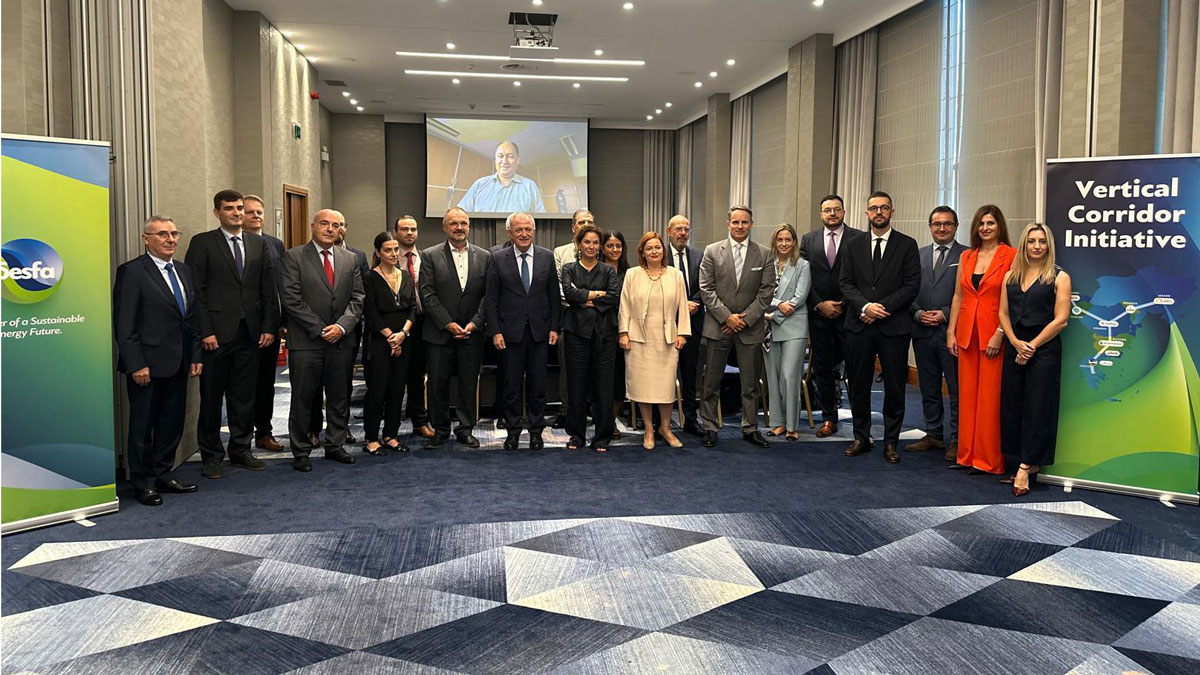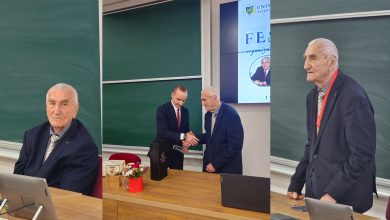Ion Sterian, Transgaz: Full Consensus for the Vertical Corridor
Representatives of gas transmission and system operators (TSOs), signatories of the Vertical Corridor Memorandum, have once again expressed their consensus for the construction of the Vertical Corridor, and investment decisions will be made by all countries participating in this unitary project, said Ion Sterian, CEO of Transgaz, present at the fourth Metropolitan Summit in Thessaloniki.
“Today (September 5 – ed.) we met in Thessaloniki, as agreed since summer. We have analysed the reasons that led to the lack of capacity booking in auctions, I am referring to the one on incremental capacity on July 1, and the next steps to make this Vertical Corridor operational, at the proposed capacity of 10 billion cubic meters of gas in the first phase. The discussions resulted in the joint actions that we will take, including on the occasion of CESEC in Budapest on September 18-20; I refer to the presentation of a common concept to all energy ministers of the countries of the TSOs signatories of the Vertical Corridor. We want to do this in order to receive European funds to complete the gas transmission infrastructure in each country. Thus, the European Union will give funds to each country according to the concept we present as a unitary whole. Each will justify to the European Commission the need for funding on the respective projects they have. For example, at ICGB – Greece, funds will be given to increase IGB capacity from 3.5 billion cubic meters to 5 billion cubic meters. Bulgaria wants funds to rebuild 63 kilometres of pipeline, to increase the capacity of the Kardam compressor station, in order to increase the volumes at the border with Romania – I am referring to Kardam – Negru Voda. Other funds will go towards increasing the reverse flow interconnection capacity between Bulgaria and Greece, Greek projects between Alexandroupolis and Sidirokastro to Kulata, as well as several compressor stations. Romania wants to receive money for BRUA 2, plus for a compressor station in the Coroi area, in the centre of the country, between Onesti and Medias. After we present the project to energy ministers at CESEC in Budapest, we will ask for a meeting with European Commission President Ursula von der Leyen and the new Energy Commissioner. By January 18, 2025, projects must be submitted to the Modernization Fund by each country. At the end of March, the group of countries in the Modernization Fund (10 countries) will meet, joined by Greece and Portugal, plus the three neutral countries – Germany, the Netherlands and Sweden. At the end of March, we will know what funding we have and will start the investment decisions, tender procedures and so on. If the proposed timetable is respected, we hope that the Vertical Corridor project will be ready by the end of 2026 – early 2027,” said Transgaz’s CEO.
“The gas will come from LNG terminals in Greece, Turkey, we will have gas from Azerbaijan etc. The CEO of Gastrade informed us that the terminal at Alexandroupolis will be operational from October 1. We are still interested in becoming a shareholder of the Alexandroupolis floating gas storage and regasification platform (FSRU), but we want to enter at the right time, when all conditions are met to maximize the effect for Romania,” Ion Sterian also pointed out.
The Thessaloniki summit also discussed gas quality in Central and Eastern Europe and the Balkans. Transgaz’s CEO mentioned on this issue: “We have established the quality of gas, in particular the methane content, throughout the CEE area. There were different opinions, it has been discussed for two or three years at DG Energy, at CESEC. A consensus has now been reached and the methane content of the gas will be presented at CESEC. It will be introduced in a European Regulation, in a memorandum between all the countries, through addenda to the interconnection agreements between all the TSOs in the area, including Ukraine, Republic of Moldova.”
The Vertical Corridor, considered as a possible solution for Romania, is part of the South-North Corridor of the Three Seas Initiative (3SI) and aims to diversify natural gas sources and increase the security of gas supply for countries in Central and Eastern Europe and the Balkans. This initiative was launched and supported as early as 2016 by Ion Sterian, Transgaz’s CEO. The project involves the collaboration of countries in the Central and South-East European Union, including Slovakia, Hungary, Romania, Bulgaria and Greece, together with the Republic of Moldova and Ukraine, to develop a new alternative gas supply in the region, thus strengthening energy security. The Vertical Gas Corridor represents an extensive pipeline system consisting of current and future infrastructure, including pipelines, liquefied natural gas (LNG) terminals and storage facilities.



